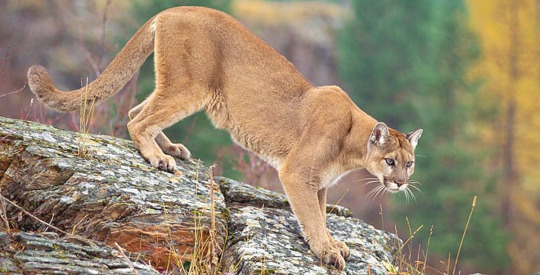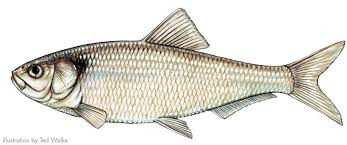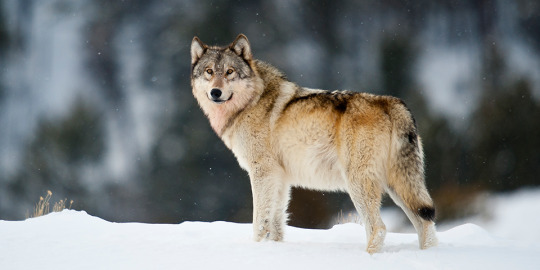stories of the environment: giving a voice to a world that needs to be heard
Don't wanna be here? Send us removal request.
Text
Green Sea Turtle Problems Not Waving Goodbye
Green sea turtles, one of the largest sea turtle species, have faced a patch of unyielding trauma as large numbers of individuals have died due to an onslaught of human activity. Following the large die-off of turtles in the early 2010s, researchers found that turtle death causes ranged from climate change and urbanization to agricultural runoff and industrial toxic waste.

https://www.pictorem.com/9713/Hawaii,%20Green%20Sea%20Turtle%20(Chelonia%20Mydas)%20An%20Endangered%20Species..html
A recent study has found that turtle problems do not stop there, though. Necropsies upon sea turtle carcasses have shown elevated levels of the enzyme creatinine kinase, an enzyme that demonstrate elevated levels following serious muscle injury. Excessive barnacle growth was also observed on the turtles, making them unable to swim due to the extreme buoyancy of their shells.
It is suspected that the root cause of these problems lies in heavy metal consumption, such as cobalt, which is found in the turtles’ blood. The abundancy of the metals increases due to farming and industry, as well as urbanization which release large amounts of metal biproduct.
Sources:
Crane, M. Sea Turtles Struggle Years After Unexplained Die-Off. (April, 2019)
https://news.osu.edu/sea-turtles-struggle-years-after-unexplained-die-off/
0 notes
Text
Hungry Polar Bears Moving to Russia
Climate change is forcing the movement of yet another species: polar bears. Due to the melting of polar ice caps and subsequent lack of access to food, polar bears are moving inland to the Russian Artic archipelago. The main town of Belusha Guba has become completely overrun by the species, with as many as 52 individuals being spotted in the area since December. There have been multiple accounts of the starving bears actually entering people’s homes.

https://e360.yale.edu/digest/remote-russian-territory-besieged-by-dozens-of-polar-bears
Residents are understandingly worried about their safety as the area becomes taken over by the creatures, and authorities has been brought in to drive the bears out of the area using non-lethal forces. Unfortunately, if these attempts are not successful, authorities plan to assassinate problematic bears.
This acts as a clear warning to all involved; if we do not stop melting these creatures’ homes, they will move into ours.
Sources:
E360 Digest. Remote Russian Territory Besieged by Dozens of Polar Bears. (February, 2019) https://e360.yale.edu/digest/remote-russian-territory-besieged-by-dozens-of-polar-bears
0 notes
Text
Captive Elephants: maintaining and supporting healthy populations
Although it may not be well known, almost a third of the world’s population of Asian elephants are actually in captivity, living primarily in the countries of India, Thailand, and Myanmar. Here the species are put to work, dragging logs in the timber industry and acting as part of local tourism industries.
A study conducted by the University of Turku in conjunction with the University of Sheffheld has found that captive elephant populations may experience a decline in the coming years. While the sustainability and health of wild Asian elephant populations in the primary concern in elephant conservation, because such a large population of these creatures are in captivity, investigation of the welfare standards of captive elephants must be prioritized as well.

https://www.worldatlas.com/articles/what-are-the-differences-between-an-asian-elephant-and-an-african-elephant.html
Researchers found that although captive elephant populations are vulnerable to decline, these trends can be mitigated through the introduction of practices that promote survival in juvenile individuals. This would be achieved through making changes in the systems of training where elephants are traditionally separated from their mothers at an early age, causing them to be extremely stressed.
Through improving captive elephant living conditions, researchers hope that Asian elephant populations, both captive and wild, will be benefited globally.
Sources:
University of Sheffield. Future of Elephants Living in Captivity is Under Threat. (March, 2019)
https://www.sheffield.ac.uk/news/nr/future-asian-elephants-captivity-under-threat-1.837295
0 notes
Text
Southern California’s Mountain Lions Facing Challenging Years to Come
Mountain lions are iconic beasts of America’s west coast. These elusive creatures lead solitary lifestyles in which they are rarely spotted. While these carnivorous beasts are not considered as threatened for extinction, in Southern California their population dynamics are pushing them to be at risk of impending local extinction.

https://www.berkshireeagle.com/stories/are-the-mountain-lion-sightings-in-monterey-for-real,559149
The Problem:
Mountain lions consistently face human threats to their populations in the form of vehicular incidents, poisoning generated in pest control, shootings, and wildfires. These existing threats already place a large amount of stress upon the species population, however, the largest threat to their survival lies in their diminishing gene pool. With human development of infrastructure, such as buildings and roadway, mountain lion territories and ease of movement are being divided up into smaller and smaller areas. Mountain lion populations in the Southern California area have been split into two major areas which each respective population facing large loss of genetic diversity, making their populations effectively unstable due to inbreeding depression.
Proposed Solutions:
1. Introduction of mountain lion individuals to these isolated populations. Even the introduction of a single individual would greatly widen the gene pool of a population, increasing the chances of survival.
2. “Wildlife corridors”. Wildlife passageways connecting the two areas would enable the two populations to interact naturally, increasing each gene pool’s diversity and generating a more efficient means n which to slow population decline.
Sources:
Papenfuss, M. New Study Warns of Extinction Threat For Southern California’s Mountain Lions. (March, 2019)
https://www.huffpost.com/entry/mountain-lions-extinction-wildlife-corridors_n_5c945693e4b057f73308fa56
E360 Digest. Mountain Lions Could Go Locally Extinct in Southern California Within 50 Years. (March, 2019)
https://e360.yale.edu/digest/mountain-lions-could-go-locally-extinct-in-southern-california-within-50-years
0 notes
Text
Feral Fungus Raising Concern in Hundreds of Amphibian Species
Amphibians historically have captured the imaginations of many writers and artists, playing a key role in the evolution of many cultures. In Korea’s Goguryeao dynasty, the toad likened to the god of the moon and motifs of its figure were placed upon tomb walls. Amphibians also possess huge potential in modern medicine, such as through the regeneration of organs and tissues. Outside of services to human populations, amphibians act as a key player in many ecosystem food webs. They serve an important role in the regulation of insect populations, as well as acting as an invaluable link between aquatic and terrestrial environments. Their populations, however, are under attack from deadly fungal infections and disease.

https://www.facebook.com/pg/Salamander-ART-Tr%C5%BEi%C4%8D-572354669633744/events/
Chytridiomycosis, a fungal disease that destroy amphibian skin, has led to steep decline in species’ populations, such as species of frogs, toads, and salamanders. According to a study conduced by the Australian National University, this disease is not only catastrophic to amphibian populations and diversity upon a localized scale, but chytridiomycosis, or chytrid is acting as the single largest generator of biodiversity loss from a disease.

http://www.inkart.net/proddetail.php?prod=D-WFF
According to the research team, in Australia alone, more than 40 frog species have declined within the past thirty years. The spread of chytrid comes down to accelerated levels of interconnectivity resulting from globalized wildlife trade. This devastation acts as a testament to the fact that any human activity is accompanied by a plethora of consequences, whether intended or not, and underscores the need to live with compassion and awareness.
Sources:
Endangered Species International. Amphibians: Why care for amphibians? (2011)
https://www.endangeredspeciesinternational.org/amphibians6.html
Fungal Disease Threatens Hundreds of Amphibian Species Worldwide. Sheele, B et al. (March, 2019) https://cmns.umd.edu/news-events/features/4383
0 notes
Text
Cold Water Fish in Hot Water

https://www.fishandboat.com/Fish/PennsylvaniaFishes/GalleryPennsylvaniaFishes/Pages/Herrings.aspx
A study conducted by the University of New Brunswick has released a harrowing study regarding cold-loving fish species survival in the face of climate change. In northern areas, climate change has generated accelerated rates of biome change. The Artic Circle of Europe serves as an explicit example of climatic differences through seasonal changes with longer summers and shorter winters. Lakes found in these areas have been completely transformed with elevated global temperatures. Lakes that had previously boasted crystal clear water have become havens for microscopic plants and phytoplankton. This influx of invasive species has completely revolutionized lake food webs, making Artic cold-water lakes mimic those found within central Europe. Species adapted to cold weather have consequently observed dwindling numbers as individuals better adapted to warmer conditions flourish.

https://johnmuirlaws.com/draw-trout-step-step/
Integral fish species such as trout, whitefish, and Arctic char are being largely outcompeted by warm-water species. This is problematic both in ecosystem equilibrium, but also many local communities’ economic systems where cold-water fishing played a large role in the food industry.
Salmon populations are also threatened with increasing air temperatures as stress and metabolic rates raise with these changes. Additionally, changes in winter precipitation and altered flow in streams have presented large effects upon patterns of migration. Paired with existing stressors upon salmon populations such as over-fishing and invasive species, salmon are particularly vulnerable to widespread loss.
Sources
UNB Newsroom. Climate Change in the Artic: Warming lakes pose a challenging environment for cold-loving fishes. (March, 2019) http://blogs.unb.ca/newsroom/2019/03/climate-change-in-the-arctic-warming-lakes-pose-a-challenging-environment-for-cold-loving-fishes.php
Williams, J. Isaak, D. Imhof, J. Hendrickson, D. McMillan, J. Cold-Water Fishes and Climate Change in North American. (2015) https://www.fs.fed.us/rm/pubs_journals/2015/rmrs_2015_williams_j001.pdf
0 notes
Text
Meerkats in Decline as Temperatures Rise
In the seemingly barren deserts of southwestern Africa, the underground is teeming with life where systems of animal populations are dynamic and complex. Meerkats, or Suricata suricatta, compose vibrant communities in these desserts where they comprise cooperative packs within complex burrow systems. To avoid the intense temperatures of midday, which can reach 100 degrees Fahrenheit, Meerkats retreat to their tunnel systems which can extend to about 1.5 meters under the desert surface. These social animals form groups of up to 50 individuals with a single female in power, who typically evicts subordinate females of the group to form their own colonies. In the seemingly barren deserts of southwestern Africa, the underground is teeming with life where systems of animal populations are dynamic and complex. Meerkats, or Suricata suricatta, compose vibrant communities in these desserts where they comprise cooperative packs within complex burrow systems. To avoid the intense temperatures of midday, which can reach 100 degrees Fahrenheit, Meerkats retreat to their tunnel systems which can extend to about 1.5 meters under the desert surface. These social animals form groups of up to 50 individuals with a single female in power, who typically evicts subordinate females of the group to form their own colonies.

https://cosmosmagazine.com/biology/a-meerkat-stares-into-an-uncertain-future
With increased temperatures resulting from global climate change, the Kahari Desert in southwestern Africa will become drier and warmer. These heightened temperatures have strong potential to completely devastate meerkat populations. Not only will less offspring be produced overall, but the less-experienced individuals who are cast out of their mother colony will not have the resources to resist the health impacts of elevated desert temperatures. Multiple studies have estimated that the meerkat species will face their impending extinction in only 50 years because of this.

http://nationalzoo.com.au/meerkat-babies/
While the increase of summer temperatures may largely limit meerkat lifespans and survival rates, the increased winter temperatures have the potential to serve as the saving grace for this species. Meerkats ay be able to step up winter reproduction, as well as gain weight during this time period in order to increase their ability to resist extreme summer temperatures.
The effects of climate change know no bounds, effecting both cold-dwelling species in danger of losing their habitats, and desert creatures who are simply being push over their climatic edge.
Sources:
The Editors of Britannica. Meerkat. (October, 2018). Encyclopedia Britannica.
University of Zurich. "Fate of meerkats tied to seasonal climate effects." ScienceDaily. February 2019. www.sciencedaily.com/releases/2019/02/190213124433.html.
Chase Purdy. “Climate Change Threatens to Wipe Out Meerkats in the Next 50 Years” Quartz. February, 2019. https://qz.com/1552524/climate-change-threatens-to-wipe-out-meerkats-in-the-next-50-years/
0 notes
Text
Gray Wolves: a history and a fight for survival
Gray Wolves epitomize man’s desire to control the world around them, drastically changing wildlife populations with lasting effects. Wolves have historically been important to human beings in mythology and folklore and frequently have been regarded as man’s equal. In many indigenous American cultures, the gray wolf was regarded as man’s companion and the hunting by gray wolf packs was admired and mimicked. However, across a more contemporary scale, gray wolves have become villainized as misunderstanding of the species in regards to safety and livestock became increasingly widespread.

https://defenders.org/gray-wolf/basic-facts
Gray wolves are skilled hunters, attaining their prey, which is primarily large, wild herbivores such as deer, moose, and elk in packs of about fifteen individuals. Contrary to many beliefs, wolves tend to avoid human populations altogether, only preying upon livestock in areas with food shortages and almost never attacking humans themselves.
Concerns surrounding livestock loss were used to justify mass killings of wolves, as well as glorification of the act through bounties killing 100,000 wolves annually by the 1870s. During this nineteenth and early twentieth century, the species was essentially eradicated until their range was reduced to a small corner of Minnesota. The late twentieth century saw changes to wolves’ perception as legislation was passed to promote their protection, however they were delisted under the Endangered Species Act in 2012. This prompted a renewed hunting season to ‘manage the wolf population’ which saw an over-hunting of the species as a whole. Thankfully, the wolves are not completely unprotected today as hunting has been banned in Minnesota, Wisconsin, and Michigan where populations are small, but slowly recovering. Today, the presence and activity of humans is the single largest of threat to gray wolf populations.

https://www.pinterest.com/pin/442337994622626070/?lp=true
US Fish and Wildlife Service. Gray Wolf- Western Great Lakes Region: status under the Endangered Species Act. October 12, 2018.
The Editors of Encyclopaedia Britannica. Gray wolf. Encyclopædia Britannica. October 19, 2018 https://www.britannica.com/animal/gray-wolf
0 notes
Text
Bengal Tigers: Big Cats with a Big Problem
Description
Bengal Tigers, or panthera tigris tigris, is the most numerous subspecies of tiger, with numbers only just exceeding 2,500 individuals. The majority of Bengal Tigers are found in Eastern Asia, with ranges primarily in India. Tigers primarily carry out solitary lives, using hormonal olfactory systems to ward off rivaling individuals. Additionally, tigers rely upon behavior such as claw markings, vocalization, and fecal matter to maintain these territories. They are distinguished hunters, able to jump up to 30 feet in order to capture their diverse prey; including deer, wild pigs, and even porcupines. Their dislike of higher temperatures limits their range and also drives their liking of aquatic environments, making tigers exceptionally good swimmers who also enjoy bathing. Tiger liters are typically two to four cubs who stay with their mothers for approximately 2 years.

https://www.saatchiart.com/art/Photography-Bengal-tiger-lying-in-shadowy-water-hole-Limited-Edition-1-of-10/1025484/3962920/view
Importance
Tigers serve as apex predators in their ecosystems, playing a key role in the maintenance of biodiversity through regulation of species.
Threats
Bengal Tigers play a key role in Asian culture, both artistic and medicinal. Outside of poaching for tiger fur, tiger parts are persistently used in medicinal practices. While scientists have proven that all medicinal properties of tigers are simply folklore, the use of tiger parts in the treatment of ailments has not become antiquated. While the poaching of tigers for any purposes has been outlawed, a recent reversal of a ban on medicinal usage of tiger parts is prompting many environmentalists to become increasingly concerned for tiger populations. Additionally, climate change is quickly threatening Bengal Tiger habitats through rising sea levels and ecosystem disruption. This is especially prevalent in mangrove environments found in both Bangladesh and India.

https://www.earthrangers.com/wildwire/top-10/top-ten-tiger-facts/
Sources
National Geographic
https://www.nationalgeographic.com/animals/mammals/b/bengal-tiger/
Javier C. Hernández. (October, 2018) China Reverses Ban on Rhino and Tiger Parts in Medicine, Worrying Activists. New York Times. https://www.nytimes.com/2018/10/29/world/asia/china-rhino-tiger-poaching.html
The Editors of Encyclopaedia Britannica. (October, 2018) Tiger. Encyclopædia Britannica. https://www.britannica.com/animal/tiger
0 notes
Text
Honey Bees: important pollinators facing new challenges
Honey Bees act as the most essential pollinator in extensive ecosystems, producing disproportionate effects on plant biodiversity through their specialized pollinating interactions. Although, in the face of climate change, these insects are suffering the effects of intense winter climates, mite infestation, and disease. There is hope, however, as technology and selective breeding attempt to offer bees a line of defense against these stressors.

https://www.pinterest.com/pin/65794844536422605/?lp=true
The Importance of Bees
Honey bees are present in 89 percent of the pollination networks found within the species’ natural range and in 61 percent of networks in areas in which bee were introduced by humans (Clarke, D. Et al, 2017).
Honey bees, due to the widespread nature of their pollination range, are instrumental in maintaining plant biodiversity, especially in flowering plants. This is a result of not only competition between flowering species, but also mutual adaptive compromise and coevolution. The innumerable shapes, colors, flowers, and even smells, of the beautiful flowers populating our planet can be attributed to honey bees (Shimizu, 2014).
The agricultural industry is heavily influenced by bee pollination, especially pollination provided by honey bees, as they contribute, on average, 15-20 billion dollars annually to agricultural industries in the United States. 65 percent of American crops are reliant upon pollination by honey bees (Kremen Et al. 2002).
Dangers Facing Our Bees: In general, the reduction of bee populations can be understood as resulting from queen bee loss, pesticide use, freezing, disease, infestation, and starvation.
Largely, Colony Collapse Disorder (CCD), an event where the rapid loss of adult bee population within a hive ends in major hive abandonment is caused by co-infestation of diseases with parasites such as microflora and mites.
Varroa Mites have devastating effects on honey bee populations that leave individuals dead within the hive as they attack both larvae and adult bees. These mites act as external parasites to honey bees, extracting blood from individuals and subsequently weakening and shortening bee lifespans. This leaves bees much more vulnerable to disease that they would otherwise have possessed the ability to resist. These Varroa mites are currently a rising problem because consistently higher temperatures fail to limit their population growth (Bessin, R. 2016).

http://www.drawingskill.com/art/35170
A Buzz of Hope
1. Hygienic Bees: Hygienic bees are honey bees that are bred to identify Varroa mite-infested bees. Bees with this trait are able to smell diseased and demised pupae, uncap them, and finally remove them from the hive. This prevents the spread of Varroa mites within the hive (Xonis, C. Et al. 2015).
2. Reduction of Pesticides: In personal gardens, households should avoid use of pesticides and opt for beneficial insects in their place.
3. Planting of Bee-Friendly Gardens (Honey Bee Conservatory)
Bees, although they may be small, have incredibly large, beneficial impacts upon the ecosystem that are take for granted. In the face of changing climates and ecosystem structures, there are a variety of resources and strategies being deployed to come to the rescue of these amazing insects.
Sources
Clarke, D., Morley, E., & Robert, D. (2017). The bee, the flower, and the electric field: electric ecology and aerial electroreception. Journal of comparative physiology. A, Neuroethology, sensory, neural, and behavioral physiology, 203(9), 737-748.
Shimizu, A., Et al. (February 2014) Fine-tuned Bee-Flower Coevolutionary State Hidden within Multiple Pollination Interactions. Scientific Reports: a natureresearch journal.
Kremen, C. Williams, N. Thorp, R. Crop pollination from native bees at risk from agricultural intensification. (December 2002) Proceedings of the National Academy of Sciences 99 (26) 16812-16816; DOI:10.1073/pnas.262413599
Bessin, R. Varroa Mites Infesting Honey Bee Colonies. (March 2016) Entomology at the University of Kentucky.
Xonis, C. Et al. (2015.) Variability in Hygienic Behavior of Bee. Bulgarian Journal of Agricultural Science.
1 note
·
View note